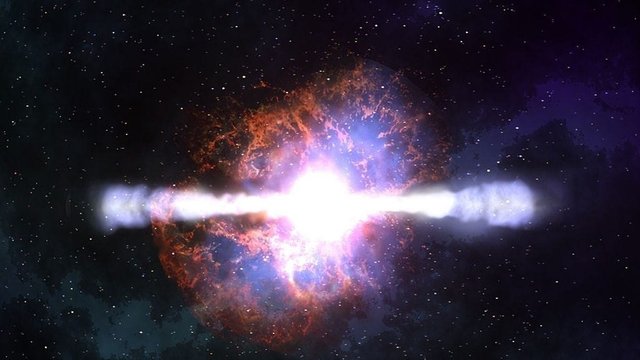A pair of Harvard professors have proposed traveling the universe at relativistic speeds close to the speed of light by exploiting the existing natural phenomena that are supernovas.
Boffins Manasvi Lingam and Abraham Loeb suggest that humanity could, theoretically at least, one day create highly advanced, human-engineered spacecraft that harness the awesome power of these explosions to traverse the universe like never before. 
Much like old-school sailing ships or kitesurfers harnessing the wind, our distant-future descendants might be capable of creating a light sail (aka a solar sail) or a magnetic sail to propel spacecraft at borderline impossible speeds.
Light and magnetic sails that rely on the electromagnetic radiation emitted by a star (or supernova) to create thrust – via pressure against the highly reflective sail – are the go-to fuel source for the astrophysicists exercising their imaginations to conjure up ways to explore distant space.
The sail is extremely light, thus precluding the need for a huge amount of fuel or large engines. Such spacecraft would be capable of reaching otherwise unfathomable speeds, using supernovae, which are billions of times brighter than the Sun, capable of providing more fuel and thrusts than we could ever hope to.
The pair developed mathematical models to determine the maximum speed that is attainable by such light sails and magnetic sails.
A supernova would theoretically be able to propel a light sail that weighs “less than half a gram per square meter to relativistic speeds,” even if it were millions of kilometers away from the site of the explosion.
A supernova gives off the same energy that a billion suns would produce in a month, so if future humans could catch that wave with the right kind of spacecraft, it could travel incredibly fast (one-tenth the speed of light) and incredibly far, assuming it doesn't hit anything along the way.
However, there are several, not so insignificant drawbacks:
The first being that people would need to time the explosion of a supernova exactly. Unfortunately we can currently only predict them within a range of about one million years.
Secondly, the craft would need to contend with friction against nearby ambient gas surrounding the soon-to-explode star, while it gets into position.
Lastly, unless we are assuming a technologically-advanced human race almost beyond the limits of our imagination these vessels would almost certainly have to be unmanned.
In order to have a crew on board, our descendants would need to figure out a way to prevent any passengers from being plastered on the back wall of the spacecraft as the wave hit and accelerated it to relativistic speeds. Conversely, at the other end, they would then require some incredibly powerful breaks in order to prevent passengers from being pulverized by the windshield at the end of the trip.
In other words, these would more likely be messenger craft used to demonstrate to other extremely distant but advanced civilizations that they are not alone and that we should hang out sometime.
Such ships would definitely be of use in projects like the ongoing Search for Extraterrestrial Intelligence (SETI), though whether that lasts until we can develop these technologies in the distant future remains to be seen.
The idea is also exciting because more advanced species than our own may already have thought of it, meaning we should keep an eye and an ear out for solar sails zipping through our solar system at relativistic speeds – easier said than done.
Oh, great. Now these two geniuses just have to present their cunning plan to Elon Musk, and we’ll have that ship until the second Thursday in 2023 at worst…
Downvoting a post can decrease pending rewards and make it less visible. Common reasons:
Submit
When the Oil Kings speak the Tsar (putin) is nothing more than a shrimp :)
MORE ON : https://steemit.com/informationwar/@sweecee/when-the-oil-kings-speak-the-tsar-putin-is-nothing-more-than-a-shrimp
ahahahah.
Downvoting a post can decrease pending rewards and make it less visible. Common reasons:
Submit